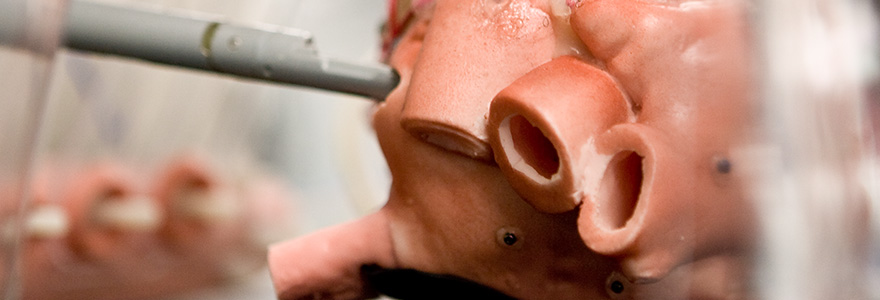Cardiac

Minimally Invasive Cardiac Surgery
Current Graduate Students: Adam Rankin & Jonathan McLeod
Minimally invasive cardiac procedures are performed by minimizing the size of a few incision through the body required to access the heart
Most cardiac procedures currently require the arrest of the heart and use of a cardiopulmonary bypass, causes a higher risk of patient morbidity. To further reduce the risk of invasiveness, techniques have been developed to perform interventions on the
Our Contribution
To address vision limitations, we have developed a visualization environment that integrates interventional ultrasound imaging with pre-operative anatomical models and virtual representations of the surgical instruments tracked in real time.
In our laboratory, we are interested in developing imaging techniques within an integrated solution that can allow the surgeon to safely access cardiac chambers in the beating heart.
What tools or techniques can we adapt to allow the surgeon to access cardiac chambers in the beating heart?
- The universal cardiac introducer (UCI) which is a robust interventional port-placement system
- An augmented image visualization system that integrates real-time ultrasound imaging, virtual models of the subject’s beating heart and magnetically tracked surgical instruments
- Accurate subject-specific dynamic models of the beating heart and surgical targets
- 4D dynamic cardiac display to give surgeons morphologic and functional information about the beating heart
- Ability to register multi-modal images (i.e. 3D CT + 2D US and 3D US + MRI)








